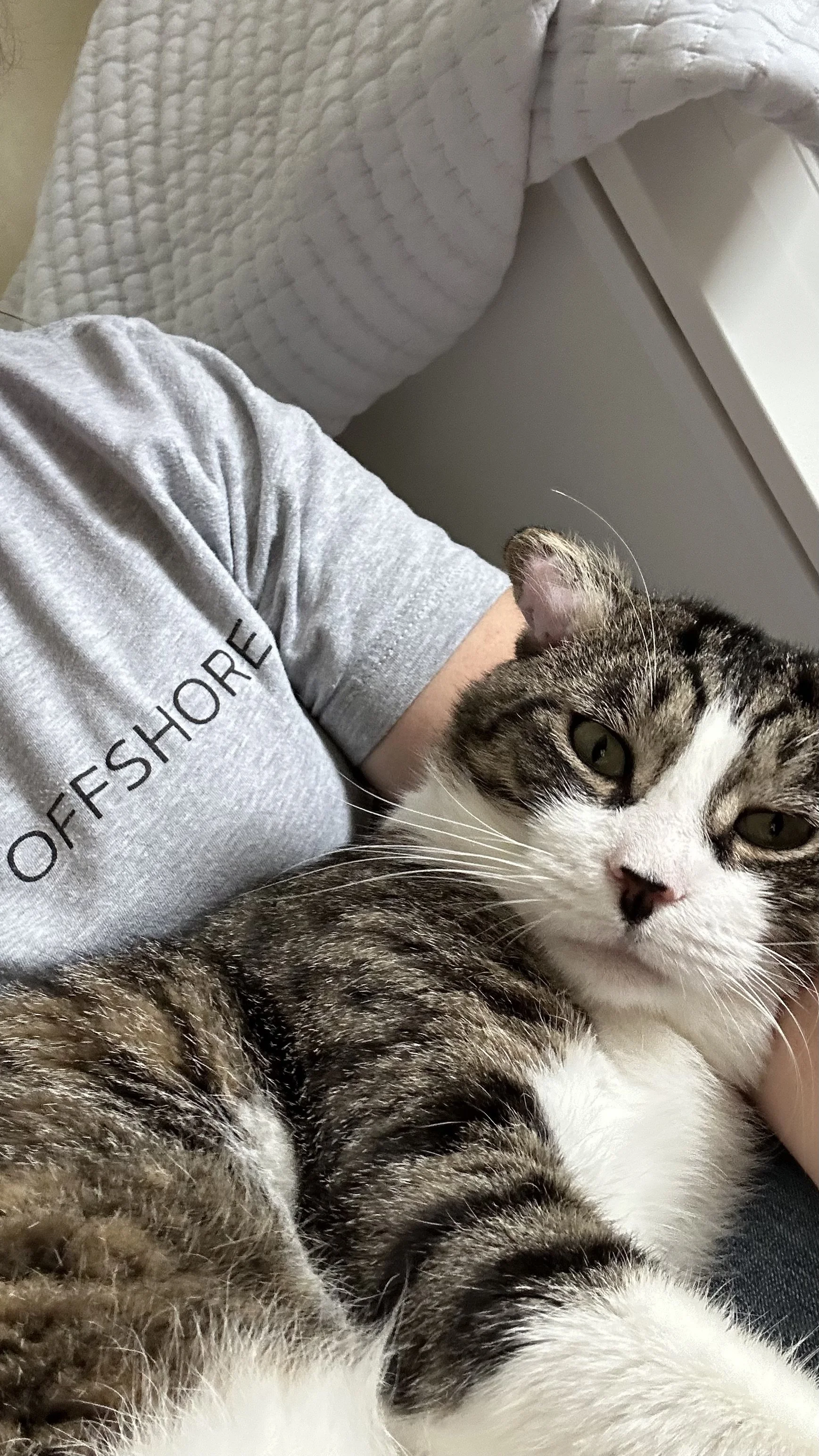The Power of Perception: What You See Shapes What Becomes
In Part 1, we explored how safety and compassion allowed two foster cats, Ophelia and Mr. Twisty, to reveal who they truly were, and how that mirrors the way humans behave under pressure. In Part 2, we unpacked how confidence is cultivated and how advice like “fake it till you make it” often undermines the very self-assuredness it aims to promote.
Now, in this final part, we turn our focus outward: How do our perceptions shape performance? What power do we hold, as leaders, mentors, colleagues, or community members, to either cultivate confidence or quietly diminish it?
The Pygmalion Effect: A Self-Fulfilling Prophecy
In the late 1960s, researchers Robert Rosenthal and Lenore Jacobson conducted a study in a California elementary school. They told teachers that certain students had shown high potential for intellectual “growth spurts,” but these students had been chosen at random.
The result? By the end of the year, those randomly selected students actually did perform better… simply because their teachers expected more from them.
Artwork: Pygmalion and the Image: The Heart Desires
Edward Burne-Jones (1833–1898) via Birmingham Museums Trust
This phenomenon became known as the Pygmalion Effect: the idea that higher expectations lead to improved performance, while low expectations do the opposite. It’s a powerful illustration of what can happen when someone believes in your potential, even if you haven’t yet “proven” it.
Fun fact: The term Pygmalion Effect comes from mythology and literature. In Greek myth, Pygmalion was a sculptor who fell in love with a statue he carved, which was then brought to life. The concept was popularized in George Bernard Shaw’s play Pygmalion (and later the musical My Fair Lady), where a professor helps transform a flower seller into a refined speaker, largely by treating her as someone capable of growth. The idea stuck in psychology to describe how high expectations can lead to improved performance. Both examples are a bit patriarchal and icky, but might come in handy for trivia night.
The inverse, often called the Golem Effect, can be equally potent: when someone expects you to struggle or fail, their behavior (sometimes even when well-intentioned) can subtly reinforce that belief, making it more likely to come true. Even offers of help, when unsolicited or unnecessary, can unintentionally signal doubt and undermine confidence, especially if the person on the receiving end feels fully capable. (This is one reason amongst many that coaches are trained not to give advice.)
These effects don’t just live in classrooms; they show up in boardrooms, team meetings, mentorship relationships, and performance reviews every single day.
Who Gets Belief, and Who Gets Scrutinized?
The hard truth is: belief isn’t distributed evenly. Some people get the benefit of the doubt. Others get proof requirements.
Research in organizational psychology has shown that leaders are more likely to invest time, mentoring, and high-visibility opportunities in individuals who already “look the part,” i.e. those who fit familiar molds of confidence, leadership, or assertiveness. That often means white, male, extroverted, or otherwise advantaged individuals are given room to grow, while others are scrutinized more closely and must repeatedly “prove themselves” before being seen as high-potential.
Multiple studies have shown that men are more often hired or promoted based on perceived potential, while women are judged primarily on a track record of past performance. The oft-cited statistic that men apply for jobs they’re only partially qualified for, while women tend not to, begins to look less like a confidence issue and more like a rational adaptation to biased conditions.
Side note: It brings to mind the meme by Kelsey Atherton, who quips, “Oh, you’re experiencing a structural problem? Have you ever considered trying different personal choices instead?”
A study led by Yale’s Kelly Shue and conducted in partnership with researchers from MIT and the University of Minnesota analyzed evaluation and promotion data from a large North American retail chain. Women in the study received higher average performance ratings than men but were still rated lower on leadership potential. This disparity accounted for up to 50% of the gender promotion gap. In other words, men were promoted based on potential; women were held back despite proof.
Even when performance is equal (or stronger), women and other historically marginalized groups are less likely to receive stretch roles or visible opportunities, simply because assessments of potential remain subjective, and often biased toward familiar archetypes.
If a shelter cat like Ophelia can be passed over as a “project,” or a colleague overlooked as “not leadership material,” the pattern is often the same: potential is presumed for some and withheld from others.
But people are always becoming. Confidence is always under construction.
What if we treated people as if they could grow into the role, rather than penalizing them for not having already arrived?
Belief Is a Leadership Choice
To be clear, belief isn’t about wishful thinking or blind optimism. It’s about seeing potential and creating the conditions that allow that potential to take shape.
Belief is practical. Actionable. Developmental.
When we choose to believe in someone, we’re more likely to:
Offer useful, specific feedback
Create space for learning without penalty
Recognize progress, not just perfection
Model trust through delegation and opportunity
Approach mistakes as data, not failure
These aren’t just “soft leadership skills.” They are performance multipliers. As Amy Edmondson’s work on psychological safety shows, teams thrive when individuals feel safe to speak up, take risks, and grow. That starts with leaders who see who someone could be, not just who they are today.
Coaching offers a powerful example of this. At its core, coaching is a space where belief is not contingent on performance: it’s foundational. Coaches operate from the assumption that their clients are naturally creative, resourceful, and whole. That belief creates a unique partnership that invites exploration, experimentation, and personal growth. It’s not about fixing people. It’s about helping them see and step into their full potential.
Revisiting Ophelia and Mr. Twisty
Mr. Twisty appreciates how soft my favorite Women Offshore t-shirt is.
Neither of our foster cats would have been labeled “high potential.” They were scared, reactive, and difficult to engage.
But with space, time, and patience, their personalities emerged. Not because we pushed them. Not because we trained them. Simply because we gave them the conditions they needed to come forward on their own terms.
It brings to mind the thought experiment Schrödinger introduced: the cat in the box, simultaneously alive and not, until observed. We, as humans, are creating realities. While he meant it to illustrate the weirdness of quantum mechanics, there’s a striking parallel in human behavior. Potential isn’t fixed. It can live in a kind of suspended state until someone chooses to see it.
The same principle applies to people. Most of us don’t need fixing. We need someone who’s willing to wait and witness; someone who holds belief steady while we navigate uncertainty. That is the incredible power of presence, and coaching is one way we offer it.
The Power of Your Perception
Whether you manage a team, mentor others, or simply work alongside people—your perception matters. What you expect, who you invest in, what you say (or don’t say)—it all shapes what’s possible for the people around you.
In quantum physics, Schrödinger’s thought experiment reminds us that the act of observation doesn’t just reveal reality, it collapses the wave function of possibility into a single outcome. In many ways, the same is true in leadership.
When we choose to see someone’s potential, we’re not just recognizing it; we’re helping to bring it into existence.
So ask yourself:
Who do I unconsciously expect to succeed?
Who might be hiding brilliance behind fear or uncertainty?
How can I offer belief—before it’s been earned—to help someone grow into it?
We don’t create confidence in others by demanding it. We create it by offering belief, space, and a mirror to remind them of what they might become.
That’s the power of perception. That’s the wave function we collapse every day, consciously or not. And that’s the kind of leadership the world needs more of.



